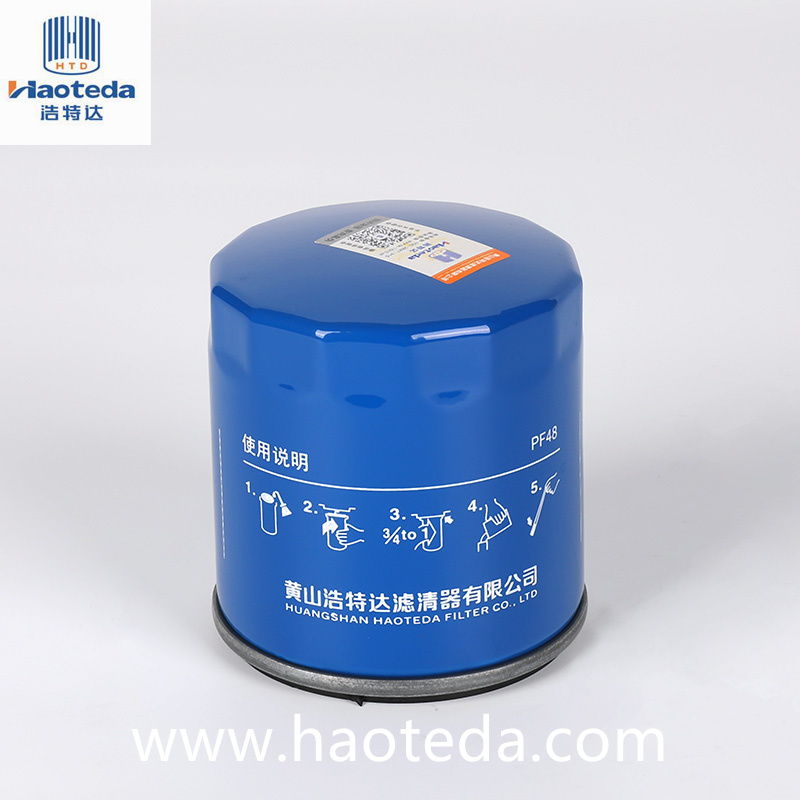It’s a delicate dance of precision engineering, advanced manufacturing techniques, and rigorous quality control measures. Yet, despite the sophistication of modern production processes, challenges persist—ranging from ensuring consistent quality in synthetic filter media to navigating the complexities of global supply chains. Let’s pull back the curtain and explore what goes into making these essential components and why they’re worth every bit of effort.
At the heart of any synthetic oil filter lies its filtration media—the unsung hero responsible for trapping contaminants and keeping your engine running smoothly. Producing this media requires cutting-edge technology, often involving synthetic fibers or nanofibers that are meticulously engineered to balance filtration efficiency with optimal oil flow. However, achieving consistency in these materials is no small feat. Even minor variations in pore size or material composition can lead to significant differences in performance. Manufacturers must invest heavily in automated production lines and real-time monitoring systems to ensure that every square inch of filter media meets exacting standards. After all, when you’re relying on a synthetic oil filter to protect your engine over thousands of miles, there’s simply no room for error. This commitment to consistency is what sets premium filters apart from their lower-quality counterparts.

But let’s not forget the elephant in the room: supply chain risks. The advanced materials used in synthetic oil filters—such as specialized polymers, adhesives, and even anti-drainback valve components—are often sourced from around the globe. While this globalized approach allows manufacturers to access the best materials available, it also exposes them to geopolitical tensions, economic fluctuations, and logistical hurdles. For instance, a sudden spike in the cost of raw materials or a disruption in shipping routes can send ripples through the entire production process. To mitigate these risks, many companies are exploring strategies like diversifying suppliers, investing in local manufacturing capabilities, or even developing alternative materials. These efforts not only safeguard the availability of synthetic-on-oil filters but also help stabilize costs for consumers who depend on them for reliable engine protection.
Quality control doesn’t stop at the production line, either. Once the filters are assembled, they undergo a battery of tests to ensure they meet industry standards and perform as expected in real-world conditions. From pressure drop evaluations to dirt-holding capacity assessments, these tests simulate the extreme environments that synthetic oil filters might encounter during their service life. For example, how will the filter perform in sub-zero temperatures? Can it withstand the intense heat generated by a turbocharged engine? These questions are answered through rigorous testing protocols that push the limits of durability and reliability. And while this level of scrutiny might seem excessive to some, it’s precisely what gives drivers peace of mind when they install a synthetic oil filter under the hood.
Of course, none of this would matter if manufacturers couldn’t communicate the value of their products effectively. One of the biggest hurdles in the industry isn’t technical—it’s educational. Many consumers still view oil filters as commodity items rather than critical components of engine health. This misconception can lead to poor purchasing decisions, such as opting for cheaper filters that compromise performance and longevity. To combat this, manufacturers are stepping up their game with clearer labeling, detailed product specifications, and even interactive tools that help drivers understand the benefits of upgrading to a synthetic filter. By bridging the knowledge gap, they’re not only boosting sales but also fostering a deeper appreciation for the science behind synthetic-on-oil filters.
In the end, crafting a top-tier synthetic oil filter is about more than just assembling parts—it’s about solving complex problems and delivering a product that drivers can trust. From ensuring consistent quality in filtration media to navigating the intricacies of global supply chains, manufacturers face a myriad of challenges that most consumers never see. Yet, it’s these behind-the-scenes efforts that make all the difference when you’re cruising down the highway, confident that your engine is protected by a synthetic oil filter designed to go the distance. So next time you pop the hood, take a moment to appreciate the ingenuity and hard work that went into creating that unassuming little component—it’s truly the unsung hero of your vehicle.
 English
English
 English
English Español
Español Français
Français
 +86-139-6774-0263
+86-139-6774-0263









